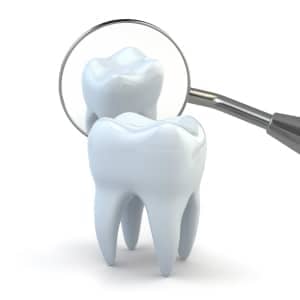The Sonicare Toothbrush
 There’s been a lot of talk about the Sonicare Toothbrush. Are you wondering what it actually does?
There’s been a lot of talk about the Sonicare Toothbrush. Are you wondering what it actually does?
The advantage of a sonic brush is that it cleans teeth via two different methods. Beyond just conventional tooth scrubbing, it also creates a secondary cleansing action that helps to disrupt dental plaque beyond where the tips of its bristles actually touch.
This design was first brought to market in 1992 under the Sonicare brand name. This brand is still considered to be the preeminent product line representing this type of brushing technology.
By definition, a sonic toothbrush (“sonic,” as in sound) vibrates at a speed that lies within the range of frequencies that humans hear.
How does a Sonicare toothbrush work?
The tooth-cleansing ability of any sonic toothbrush is due to two separate mechanisms.
- Mechanical scrubbing. – Just like with other brushes, the biggest part of a sonic’s ability to remove dental plaque is due to the action of its bristles as they scour the surface of the user’s teeth.
The effectiveness of this type of cleansing generally has to do with the amplitude of the brush head (the distance, up or down, it travels on each stroke) and also its frequency (number of strokes per minute). Sonic toothbrushes characteristically are very efficient tooth scrubbers (see below). - Fluid dynamics. –This is considered only a secondary cleaning action but it’s what makes sonic toothbrushes special.
Fluid dynamics refers to the process where the intense vibrational speed of the sonic brush’s bristles agitate the fluids that surround the user’s teeth (water, saliva), to the degree that they’re able to disrupt dental plaque colonies even beyond where the bristles of the brush actually touch.
Check out this video about Sonicare by Sonicare: https://www.youtube.com/watch?v=h3WeR-Ez7mI
The biggest part of a sonic toothbrush’s cleaning action is conventional. It’s produced by the scrubbing action of its bristles on the surface of the user’s teeth.
Consider these comparisons:
- Sonicare toothbrushes are capable of producing more than 30,000 brush-strokes-per-minute.
- Compare that number to the number of strokes created by brushing by hand, which is generally considered to be in the neighborhood of 300 per-minute.
[The Sonicare website makes a comparison by saying their brushes “deliver more brush strokes in 2 minutes than a manual brush could in a month.”] - Conventional (non-sonic) electric toothbrushes typically run on the order of 2,500 to 7,500 brush-strokes-per-minute(Source: animated-teeth.com).
These numbers don’t mean that you can’t be just as effective in removing plaque with either a manual or conventional toothbrush. But due to their high rate of speed, it’s easy to see why sonics make a good, efficient brushing choice.
Call the Greensboro dental office of Graham E. Farless DDS today for an appointment, 336-282-2868. Visit his practice online at www.gsodentist.com.